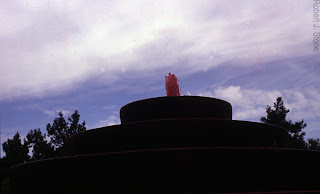13.6.12
6.6.12
4.6.12
Chronicle of a Journey to the Dark Side of the Earth: Part 6
To be continued...
1.6.12
31.5.12
Homo Sapiens: An Illustrated Field Guide
30.5.12
Stones of a Prescribed Weight
29.5.12
Ruins of Iskandar
28.5.12
The Smart Money
27.5.12
26.5.12
After All
25.5.12
24.5.12
Let Me Count the Ways
23.5.12
22.5.12
Chronicle of a Journey to the Dark Side of the Earth: Part 5
To be continued...
21.5.12
Homo Sapiens: An Illustrated Field Guide
20.5.12
Thinking the Unthinkable
18.5.12
Ruins of Datong
15.5.12
14.5.12
Seeing Through the Smoke
13.5.12
12.5.12
Continental or Native Vegetarian Breakfast
11.5.12
10.5.12
Chronicle of a Journey to the Dark Side of the Earth: Part 4
9.5.12
Homo Sapiens: An Illustrated Field Guide
8.5.12
Professor Nemesis
7.5.12
Ruins of Heliopolis
6.5.12
Sufficient Justification
4.5.12
3.5.12
High Art and Low
2.5.12
1.5.12
The Age of Reason
30.4.12
29.4.12
Chronicle of a Journey to the Dark Side of the Earth: Part 3
To be continued...
28.4.12
Homo Sapiens: An Illustrated Field Guide
Beginning roughly ten thousand years ago, having wiped out most of the world's megafauna, fully anatomically modern Homo sapiens began to domesticate some of the various plant and animal species with which they found themselves sharing the environment.
The transition to the so-called Neolithic and the dawn of agriculture laid the social and economic foundations for the emergence of civilization and led to highly complex and varied relationships between sapiens and all the other animal species globally.
To be continued...
Ruins of Hiroshima
20.4.12
The Long Run
19.4.12
18.4.12
No Thanks, Just Looking
29.3.12
Pausing for a Smoke
27.3.12
World View
25.3.12
Chronicle of a Journey to the Dark Side of the Earth: Part 2
The Fragrance of Flowers and the Subtleties of Love
The sky is overcast with frozen industrial pollution and the air is grey and gritty with blowing coal dust. In silent, resigned determination, an endless stream of cyclists, bundled against the Manchurian blasts, pedal the socialist bike lane under portraits of their Chairman, Great Leader, Dear Leader, their heads bowed, exhaling plumes of frosty breath. Pumping up and down, their calf muscles flex rhythmically under the layers of rayon long-johns under their pathetic cotton trousers, the chill benevolence of the oxymoronic people's democratic dictatorship. Profound depression is the dominant emotion, the goal of socialism justifying whatever means, however cruel, might be necessary to achieve an upstairs and a downstairs, indoor plumbing, enough to eat, electric lights and a telephone.
The whole truth has still not been told. Beauty passes by unrecognized in the bike lane. One by one, the individual faces in the passing multitude spark a torrent of associations. Looking carefully and with some sensitivity we can perceive a mad montage pieced together from the shards of living memory.
Here's the first image: A damp and vaguely pleasant humus smell permeates a jade green landscape enchanted with bird song, the distant hilltops fading into a mist as subtle as an innuendo. And then, a sudden immensity of dirty coal lies under a banshee wind in a landscape where the brick chimneys of foundries belch smoke and soot and people are bent and misshapen, numb to blowing grit and sleet, and impervious to the fragrance of flowers and the subtleties of love.
To be continued…
8.3.12
Homo Sapiens: An Illustrated Field Guide
Ruins of Ephesus

This tiny fragment of marble (8cm) has a story to tell.
Our story takes place in
The façade of the ancient library still greets visitors today. As do the remains of the public baths across the street, featuring an outer courtyard latrine surrounded by marble benches, under which water ran to flush away the waste. Musicians are said to have performed on a platform under a colonnade in the centre of the courtyard to entertain the people as they went about their business, (so to speak).
You guessed it. This fragment was once part of that very toilet seat.
Also to be seen in
This is clearly the official doctrine of the Catholic Church. Why else would the current Pope say, on his very first foreign trip, undertaken to Turkey, on November 29, 2008:
"From here in Ephesus, a city blessed by the presence of Mary Most Holy, who we know is loved and venerated also by Muslims, let us lift up to the Lord a special prayer for peace between peoples."
It is my contention that this fragment may well be a priceless holy relic.
After all, what can the Virgin have done with her time between the Ascension and her own Assumption? I suspect she must have availed herself of the wondrous library. And when nature called, she must have slipped across to the public toilet, where this fragment of marble, attached as it was to the rest of the seat at the time, almost certainly must have come into contact with the immaculate backside.
Ephesus dwindled and was eventually abandoned in the 15th century as its port silted up and its trade access failed.




























